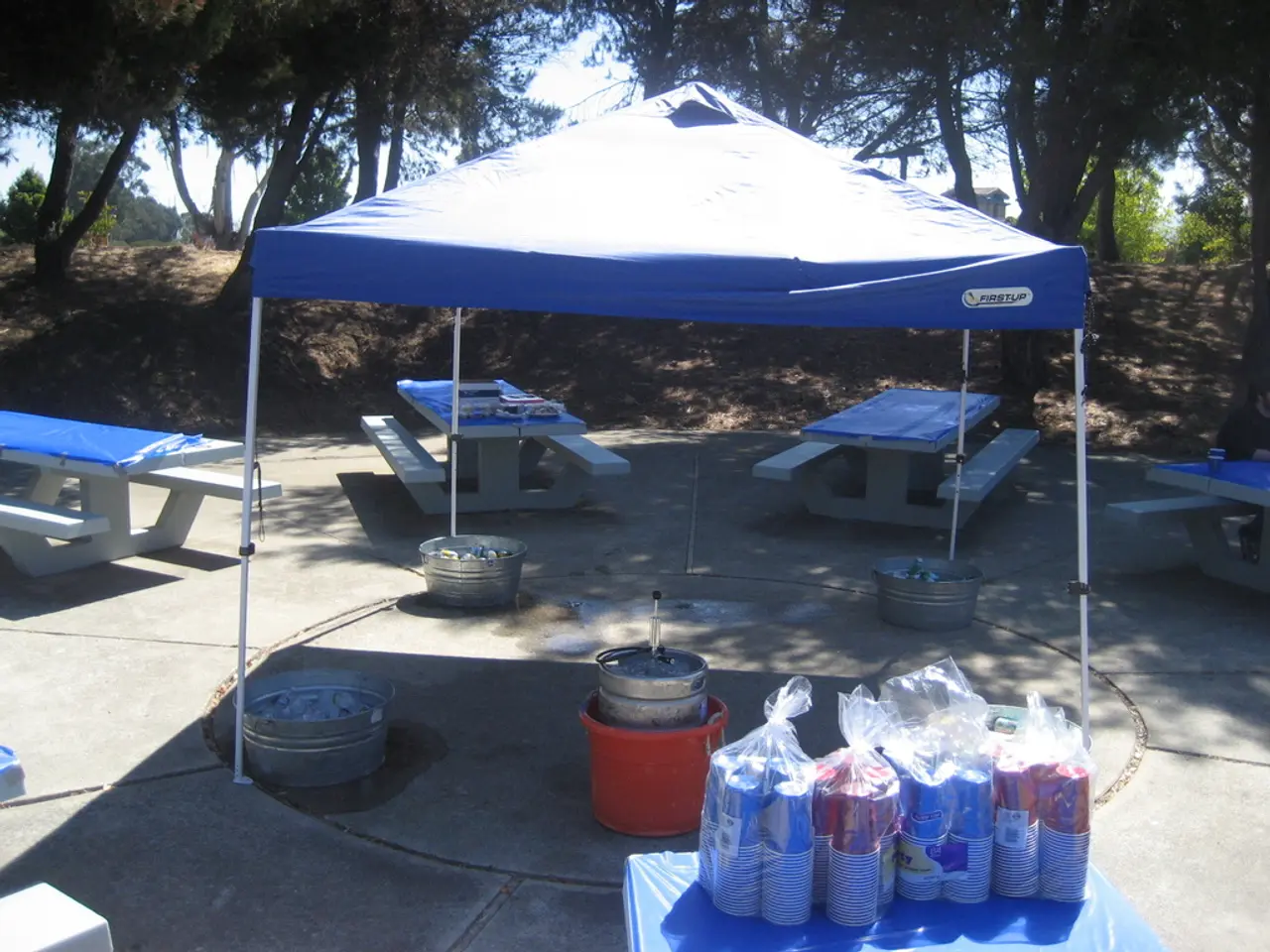Adapting Gardening in the Face of Climate Change--Meeting the Rising Challenge
Kew Gardens Unveils Carbon Garden to Highlight Climate Change Mitigation
In a groundbreaking move, Kew Gardens will unveil the Carbon Garden on July 25, 2025, at the Royal Botanic Gardens (RBG) Kew in southwest London. This environmentally provocative horticultural installation is designed to showcase the critical role of plants, trees, fungi, and soils in carbon storage and climate change mitigation.
The Carbon Garden, a brainchild of Mizzi Studio, led by Maltese-born designer Jonathan Mizzi, is divided into themed zones that highlight different aspects of carbon and climate adaptation.
Key Features of the Carbon Garden
The garden features a striking central pavilion, inspired by the symbiotic relationship between plants and fungi, built with low-carbon, natural materials. The pavilion serves as a symbol of the interconnectedness of these organisms in carbon cycling.
The garden's showpiece is a flower bed arranged in "stripes" that reflect how temperatures have changed since the industrial revolution, with cool blues for lower temperatures and hot reds for higher temperatures. This unique feature was created by University of Reading scientist Professor Ed Hawking in 2018.
The garden is also home to approximately 6,500 plants and 35 new trees, selected for their ability to absorb CO2 and withstand future climatic stresses. Species like cherry hackberry, Montezuma's pine, and spoon oak, native to China, Central America, and Mexico, have been planted in the Carbon Garden as they are expected to withstand the projected climate conditions.
The Carbon Garden also includes a dry garden that mimics a Mediterranean landscape with drought- and heat-tolerant plants, and a wildflower meadow and native hedgerows that boost biodiversity and support insect life. The garden's rain garden and bioswale are designed to demonstrate sustainable water flow management, help reduce flooding, prevent soil erosion, and support moisture-tolerant plants critical for soil stability and carbon storage.
Informative signs explaining complex concepts like photosynthesis, carbon storage, and how plants can mitigate climate change are strategically placed throughout the garden. Visitor engagement is encouraged beyond displaying the science, with a call to action for visitors to become advocates for nature and incorporate supportive actions into daily life to maintain plant and planetary health.
A New Voice for Climate Action
With approximately 27 million gardeners in the UK alone, gardeners could potentially become a new and powerful voice for climate action alongside traditional campaigners. The Carbon Garden aims to inspire people to plant resilient trees, drought-tolerant plants, encourage biodiversity, and form rain gardens to slow the rate of runoff during heavy rainfall.
Kew Gardens plans to inspire similar climate-focused ideas in other countries, particularly towns and cities dealing with catastrophic weather events. The organisation has pledged to go beyond net zero and achieve a climate positive profile for its operations by 2030.
Scientists warn that the top safety target of the Paris Climate Agreement might be lost in a few years without rapid, scaled-up action. Mycorrhizal fungi, according to Australian scientists, may absorb up to 75% of annual carbon emissions from the fossil fuel industry, highlighting the potential of fungi in combating climate change.
The restoration of two of Kew Gardens' popular and iconic heritage buildings, Palm House and Waterlily House, is part of the organisation's commitment to climate action. The restoration includes the replacement of 16,500 glass panes with high-performance sealed glazing, the installation of electrified air and water source heat pump systems, and upgrades to rainwater storage and irrigation systems.
In summary, Kew’s Carbon Garden is a forward-looking, educational ecosystem combining scientific understanding with practical landscape design to illustrate and inspire effective carbon management through plants, fungi, and soil in the context of climate change mitigation.
- The Carbon Garden, a creation by Mizzi Studio, is partitioned into themed zones that demonstrate the role of plants, trees, fungi, and soils in carbon storage and climate change mitigation, a topic within the realm of environmental science and climate-change research.
- By showcasing resilient plants like cherry hackberry, Montezuma's pine, and spoon oak, and incorporating features such as a dry garden and rain garden, the Carbon Garden aims to inspire visitors to adopt gardening practices conducive to carbon sequestration, thereby contributing to the fight against climate change.
- Kew Gardens, through the Carbon Garden and other initiatives, seeks to engage the UK's 27 million gardeners as new advocates for environmental sustainability, leveraging their influence in promoting practices like planting resilient trees, encouraging biodiversity, and adopting water flow management systems to combat climate change.




